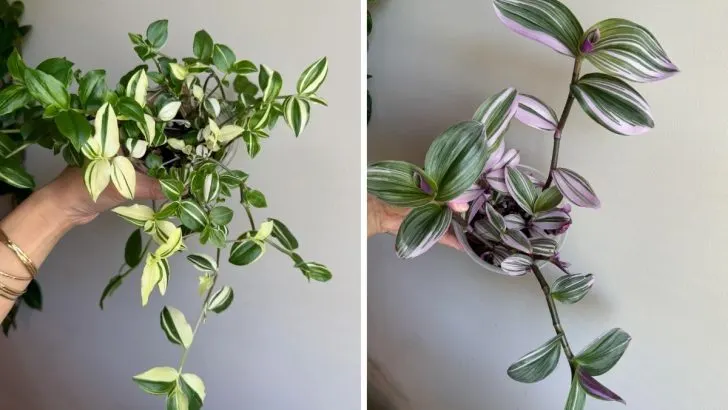Today we’re going to talk about tradescantia types (the most famous ones of course). If you’re not so sure lately which new plant to get for your home, this will be a real treat for you then.
In its big family, tradescantia has over 80 species and among that big number, I am sure that you can find one that suits you the most.
If you’re a fan of low-maintenance plants that look amazing in any space, this article is for you!
Tradescantia Plants Features
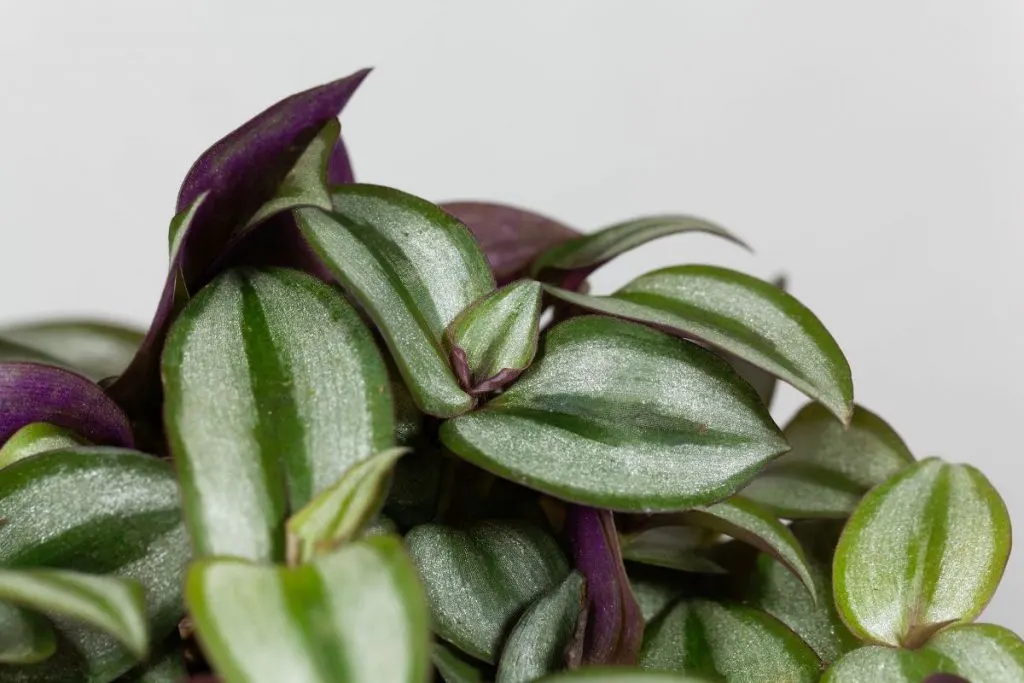
• The plant has the appearance of a low lush shrub with many leaves and small elegant flowers of white, deep purple, pink, blue, or purple-blue flowers. Moreover, the shades of flowers can vary depending on the lighting, soil quality, and place of growth.
• You will notice light green leaves usually where the light is not so direct and strong. However, if you’re growing them as garden plants they will always have darker green leaves on wonderful green stems.
• Numerous thin and knotty shoots of ornamental tradescantia can be flat or horizontal (ground cover). The leaves of the plant are narrow, as a rule, rich green in color, elongated lanceolate, and regular arrangement. There are varieties of tradescantia with a yellow, purple, or bluish shade of leaves.
• The name of the perennial was given by the famous botanist Carl Linnaeus in honor of travelers and naturalists, a father and son named Tradescant. They were the first to bring culture to Europe from Virginia, the eastern American state.
• Another name – Anderson’s tradescantia – is associated with the name of an American botanist who created hybrid forms of perennial culture. Today this plant is grown as an ornamental plant in many homes.
These plants spark joy in a hanging basket and you will be more than happy to have one in your home.
Top 9 Most Famous Tradescantia Types
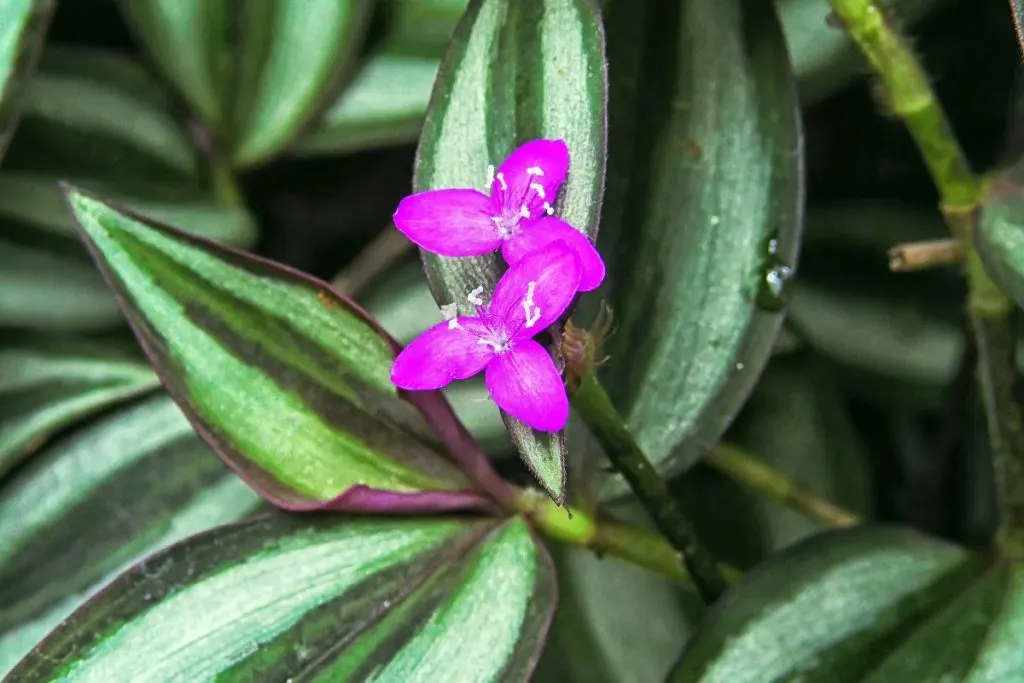
The Latin name of the genus Tradescantia is given after the botanist John Tradescant and his son of the same name John Tradescant. They opened the first open-air museum in England in London called Musaeum Tradescantianum.
They set up an exhibition of natural things and human handicrafts (books, antiques). money, etc.) Today, their collection is an integral part of the Ashmolean Museum in Oxford.
Today, we’re going to talk about the top 9 most famous tradescantia types!
1. Tradescantia Burgundy And Its Care Guide
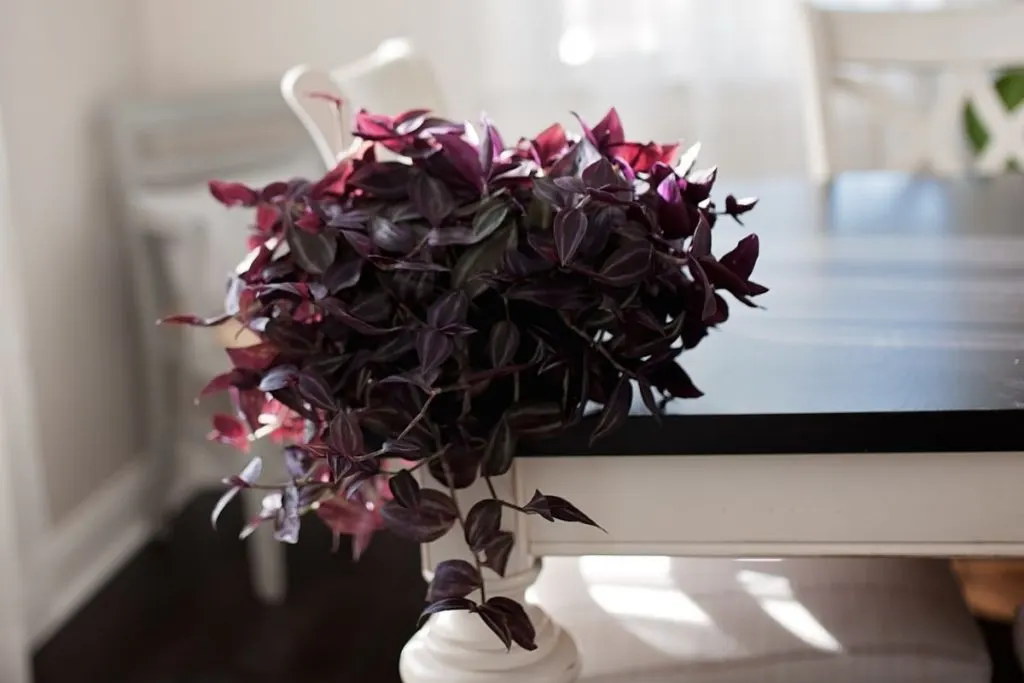
This houseplant will seduce you with its alluring striped grape leaves with fuchsia on the bottom. The bright and beautiful colors of this plant will add charm and joy to your home or office space.
– Its dark green foliage with purple veins will steal your heart for sure. Hot pink flowers are even a better treat for your home.
– This plant is poisonous if ingested. It can also cause skin irritation. The color of the leaves depends on the amount of light that this houseplant receives.
Water propagation is done with these steps:
- Cut the stem close to the knot.
- Put in a container full of water to accommodate the stems.
- Store in a bright place, exposed to direct sunlight.
- Change the water whenever necessary.
- When you notice that roots have formed around the knot, you can move to a small pot filled with earth.
– This flowering-inch plant is native to South America but is found and grown in many places with good humidity and temperature. The colored leaves are very delicate and, if not properly cared for, are susceptible to extreme weather conditions. The flowers will bloom on this plant, but they may not last long.
– This evergreen tree grows very lightly and looks great with little care. When exposed to direct sunlight, the sun dries quickly, so water when the soil is dry.
– If you are in the shade, you should not water often to prevent root rot. Wet, well-drained soil is ideal for plant growth and does not like drying out, as it makes plants crunchy and lame.
2. Tradescantia Types: About Wandering Jew Plants
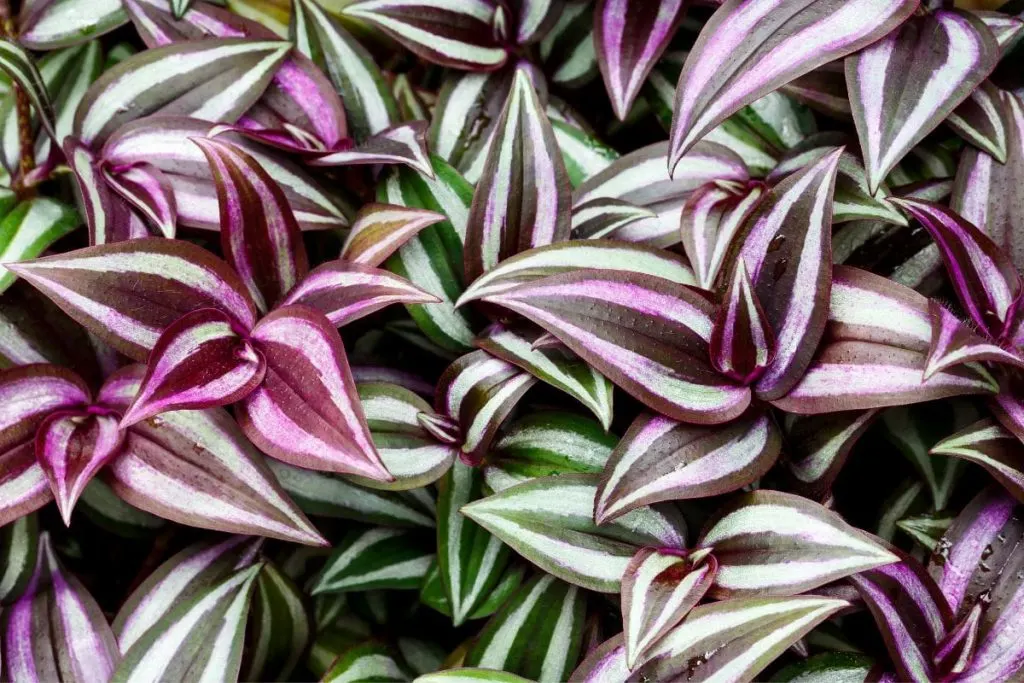
Wandering Jewish (tradescantia fluminensis), sometimes called Tradescantia zebrina or Red Gem plants have heart-shaped green leaves with purple stripes and a silvery sheen. The flowers are small with three petals and can be purple or white.
– The wandering Jew plant is a houseplant that thrives in strong but indirect sunlight. The morning sun is perfect for this plant. The brighter the light you give to your wandering Jewish plant, the more flowers it will produce. Bright light is a full win.
– These plants are happy as long as they are kept soaked or allowed to be completely dry for too long. Keep the soil evenly moist, that’s the best option for wandering jew plants.
– You can use a standard potting mix for your wandering Jew, but it will be even better if you give them soil that contains more organic matter.
To make the soil mixture yourself, add equal parts of the following:
- Perlite or coarse sand
- Peat or humus
- Garden soil
- A handful of rich, organic compost
– If your wandering Jew is a little crammed into his pot, choose a pot that is 1-2 inches wider than the current one. Prepare a pot with a little fresh potting soil around the sides.
– Whatever you do, don’t waste stem cuttings! The wandering of wandering Jews is easily done by stem cuttings. Remove all but a few leaves from the stem cuttings, then place them in a small pot with moist potting soil in a warm, bright area.
– The most prominent pests you will encounter on the wandering Jewish plants are spider mites. They like warm, dry areas, so one good way to counteract them is to keep the humidity high or fogging up your wandering Jewish plant.
– If this fails, you can rinse the plant with water to remove mites from the plant. For even more serious infections, you should remove the affected areas and use a systemic insecticide.
3. More About Oyster Plant A Tradescantia Type
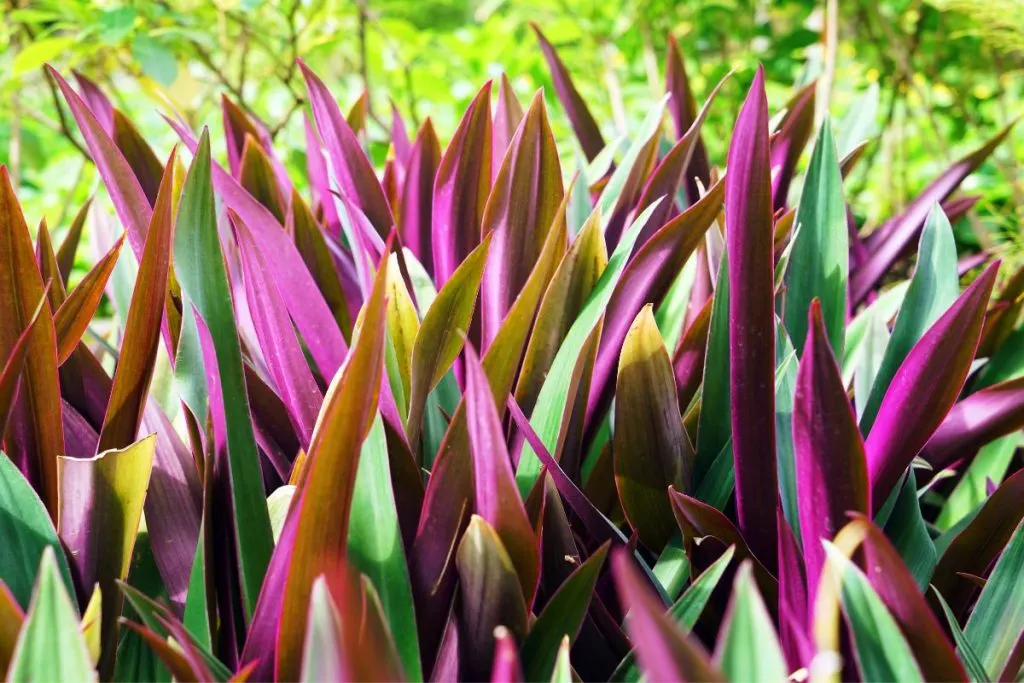
Oysters (Tradescantia spathacea) is a popular and attractive miniature houseplant that can be grown outdoors in a warm climate (or outdoors in a cold summer climate).
The underside is purple, long, lanceolate, glossy, with dark green leaves. small white or pink flowers (looks like spider flowers); And a beautiful socket shape.
– Within the species, the leaves vary in color, some are colored and some are hard. This plant grows very fast and should be planted in early spring.
Oyster plants work well in strong, indirect lighting or bright indirect light. Full sun is a big no for the oyster plant. It can be grown in a sunny location, but it needs some protection from the sun. It can live in the shade, but the leaves do not sprout much and the plant grows like a leg.
– These plants prefer moderately rich, well-drained soil with a slightly neutral acidic soil pH. Sandy clay is very good, but rocky soil is also a good option. For container plants, a mixture of ordinary houseplants is enough.
– Oyster plants are drought tolerant after growing, so watering is not recommended. Too much water can cause plants to rot and die. In winter, do not water the plants while they are sleeping. In this case, enough water should be given every two weeks.
– Oyster plants grow at temperatures between 55 and 80 F. If there is a risk of frost, you should bring them home. Being tropical, this plant needs a little moisture to keep its leaves healthy. Due to its need for warmer temperatures, frost and cold temperatures can kill this plant.
– Oyster plants do not usually require fertilization, but they do help to promote healthy growth. Fertilizers for houseplants can only be used during the growing season. However, if you apply too much fertilizer, the tips of the leaves may turn brown. In this case, you need to water well until the soil is washed.
4. Learn About Pale Puma Tradescantia
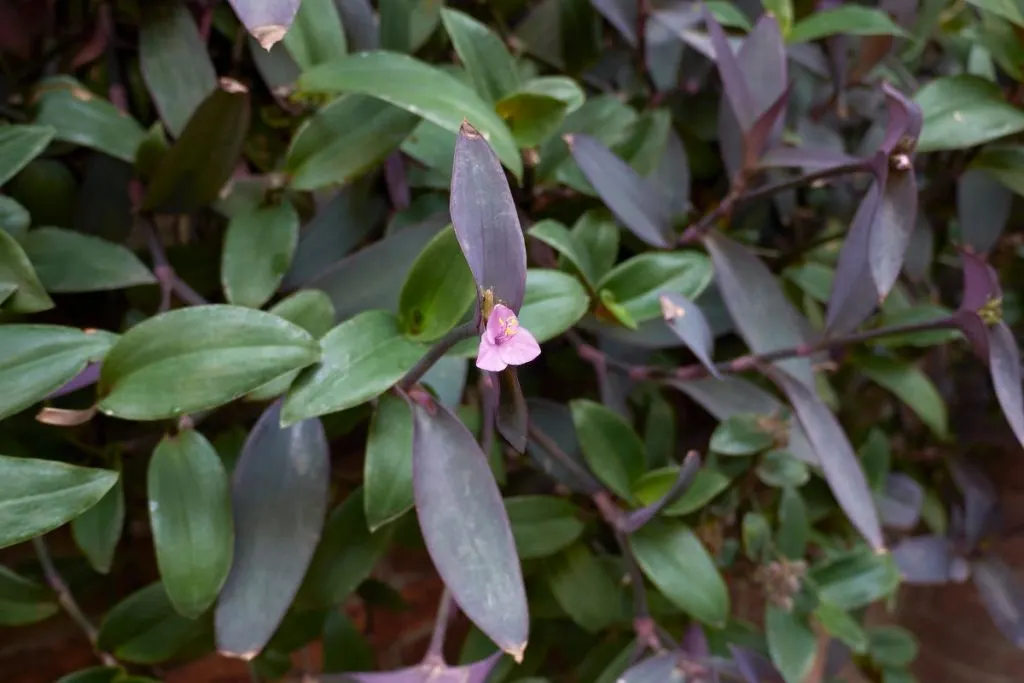
Pale puma is a very rare houseplant that requires constant watering to bloom. They grow well in bright sunlight and should be less than 3 feet from the window. This plant likes well-drained soil. If the plant is replanted twice, the plant does not need additional fertilizer.
– When poured into a 5-inch pot without direct sunlight, a pale puma needs 0.8 cups of water every 9 days.
– Pale puma can be difficult to flower, and leaves can fall if there is not enough sunlight. To increase your growth capacity, add less than 3 meters to the southern window.
– Select the area to see how the current weather in the area can affect the weather in the area. Many potting soils contain enough nutrients that the plants use for new growth. That way, the plant has enough sun to produce energy too.
– The plant may grow large enough to need a larger pot when using nutrients from the soil. To replenish this plant’s nutrients, repot Pale Puma once a year.
5. Tradescantia Ohiensis (Ohio Spiderwort)
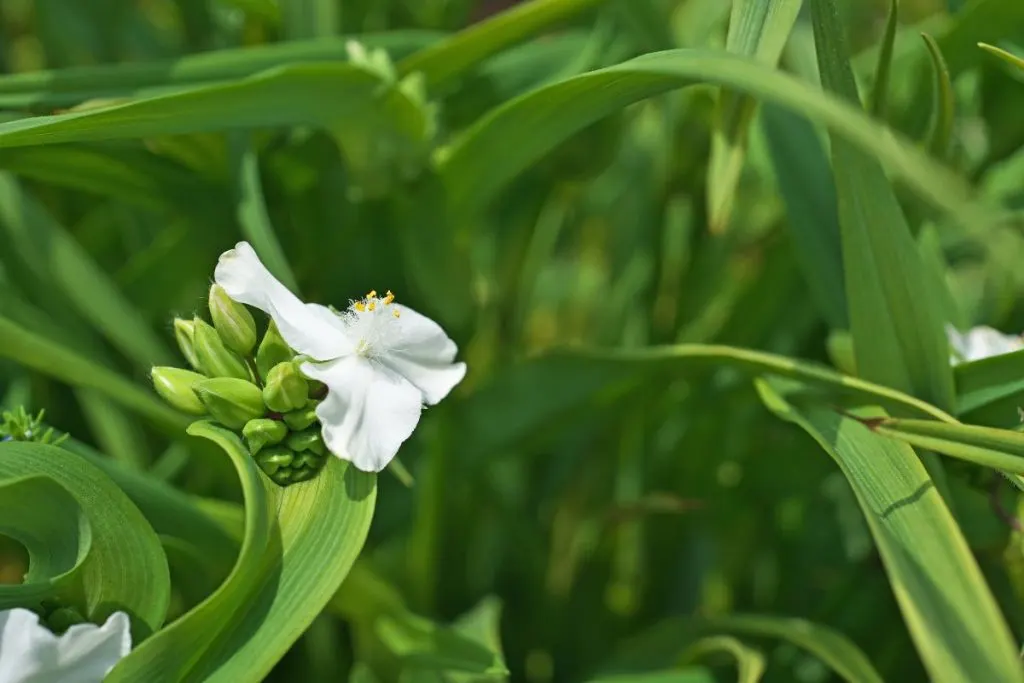
The smooth spider is a perennial plant of the tradescantia genus Commelinaceae native to central and eastern North America.
Growing up to 2-3 feet tall and 2 feet wide, this perennial plant is known for its three-leafed purple-pink flowers. In nature, it grows on meadows, along roadsides, and forest edges.
– Each flower blooms during the day, they usually open in the morning and “die” to the touch during the hottest time of the day. The leaves of the plant are long and wrinkled or grooved.
Although it can grow in the shade, the flowers are not as abundant as when they are in full sun. It grows on a variety of soils but grows best on moist, sandy soils.
– Cut 6 to 12 inches tall in mid-summer or early fall to prevent leaves from falling.
– Snails sometimes damage these plants. Deer and rabbits sometimes eat leaves. In mid-summer, the leaves tend to spread, making them less attractive. We prepared for you also deer-resistant perennial.
6. Purple Heart Tradescantia Variety
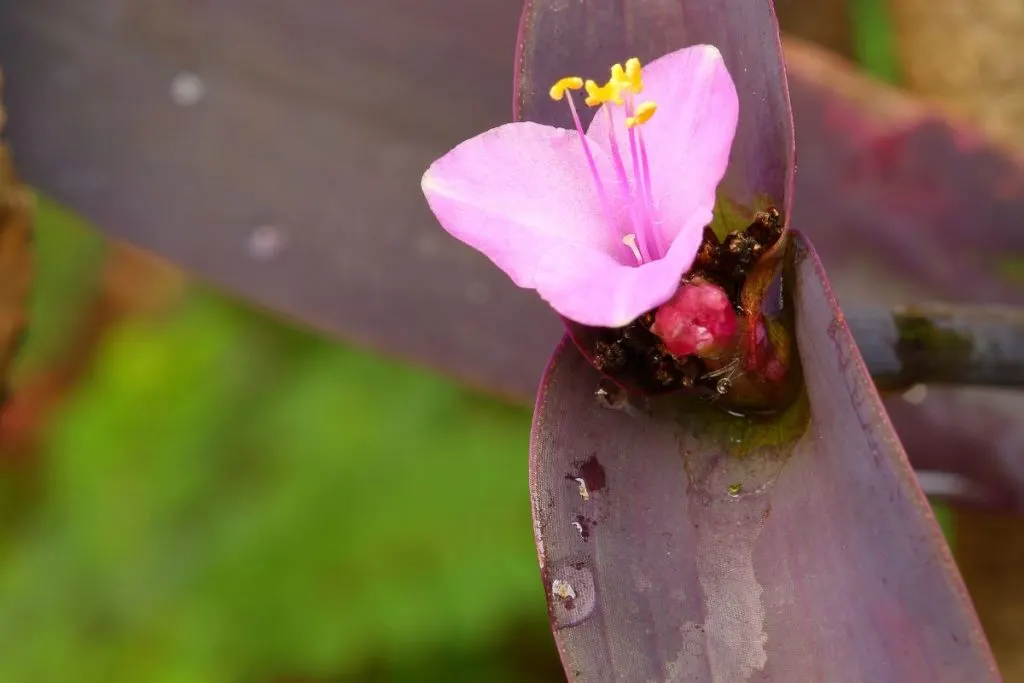
Commonly called the purple heart, purple queen plant, or purple heart Jew, this plant in the Commelinaceae family is a low-growth plant that is hardy in zones 7-10, but grows easily as an annual or houseplant in cold climates.
– Violet purple leaves are to 7 inches long and are alternately removed from the fleshy stems. The fleshy leaves are covered with pale hairs and form a shell around the stem.
– The stems are very fragile and break easily if brushed or hit too hard. Purple Hearts can be used as a floor covering, or as an indoor plant. They are well used for mass planting in the ground and they spread relatively quickly. This variety is one of the invasive species in Australia.
– Grow purple hearts in the sun for better color development. Plants that grow in the shade will look greener than purple ones. The plant is drought-tolerant and grows well in indifference, but also tolerates frequent watering. Monthly fertilization is enough for this grown indoor plant.
– After flowering, cut the plant again so that the plant does not rotate. If you containerize it for home storage or grow it as a houseplant in the winter, reduce watering in the winter and early fall, and do not fertilize until new growth begins in the spring.
– Purple hearts are virtually pest-free, but scales and honeycombs can be a problem. Juices from leaves or stems can cause redness and irritation on the skin of some people and dogs, but this is not a common problem. They are also spiderwort plants.
Plants can be easily propagated by removing cuttings from all parts of the plant. If you push the knot into the soil or planter mixture, it will usually root.
7. Don’t Forget Tradescantia Types White Velvet
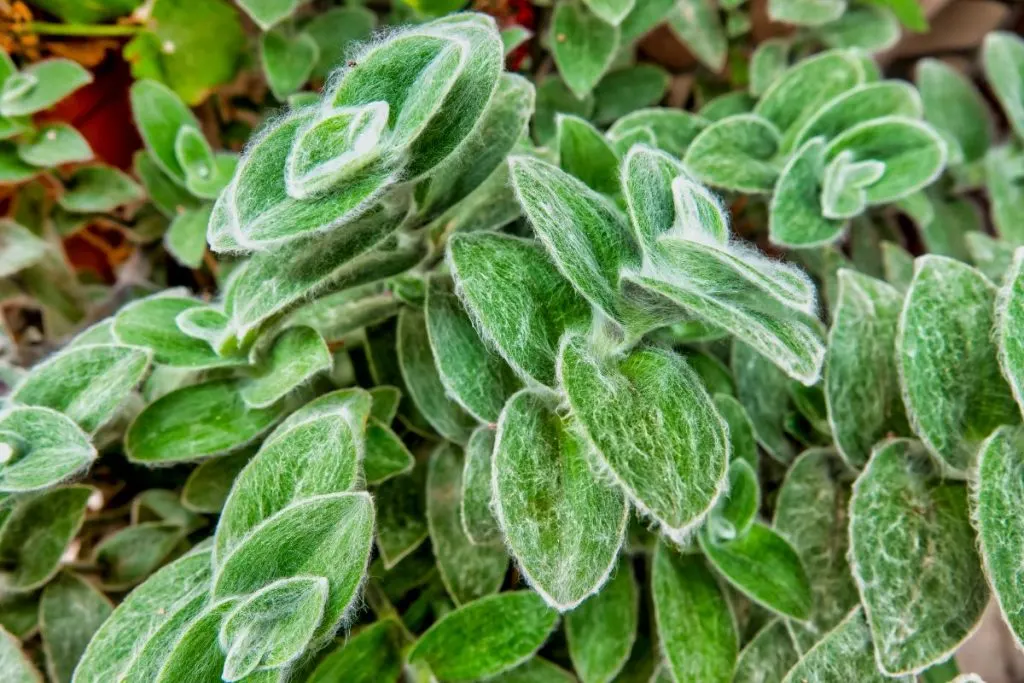
Tradescantia Sillamontana (white velvet plant) is a plant that grows in arid regions of Mexico. This easy-to-grow plant likes partial shade but can also tolerate a lot of sunlight and good soil moisture. The leaves in the sun will burn on a hot day leaving your leaves pale yellow.
– Tradescantia Sillamontana likes strong light and works well in front of a sunny window, but it also likes to block direct sunlight in the afternoon.
The brighter the light, the deeper and darker the color of the leaves gets, and too little light can completely dim the purple hues of the plant.
– Tradescantia Sillamontana grows well in universal soils. However, they like to retain moisture, so mix a moisture absorber in the soil, such as vermiculite or peat.
– Tradecantia Sillamontana loves moisture. Do not over-dry the plant, especially in winter. Regular watering is good for maintaining soil moisture. Fill the bottom of the pot with water until the water drains, making sure that the plant does not get caught in the water.
– Fertilizing Tradescantia Sillamontana (white velvet plant) is not necessary, but feeding will reward you with good growth.
Due to the viticulture, Tradescantia requires regular pruning to maintain a pleasant, bushy appearance and lovely lush foliage.
– Observe the plant regularly and check the underside of the insect leaves. It has a non-toxic scent and has a high decorative value, so it can be grown with other plants at home.
8. Tradescantia Virginiana: Lovely Herbaceous Perennial
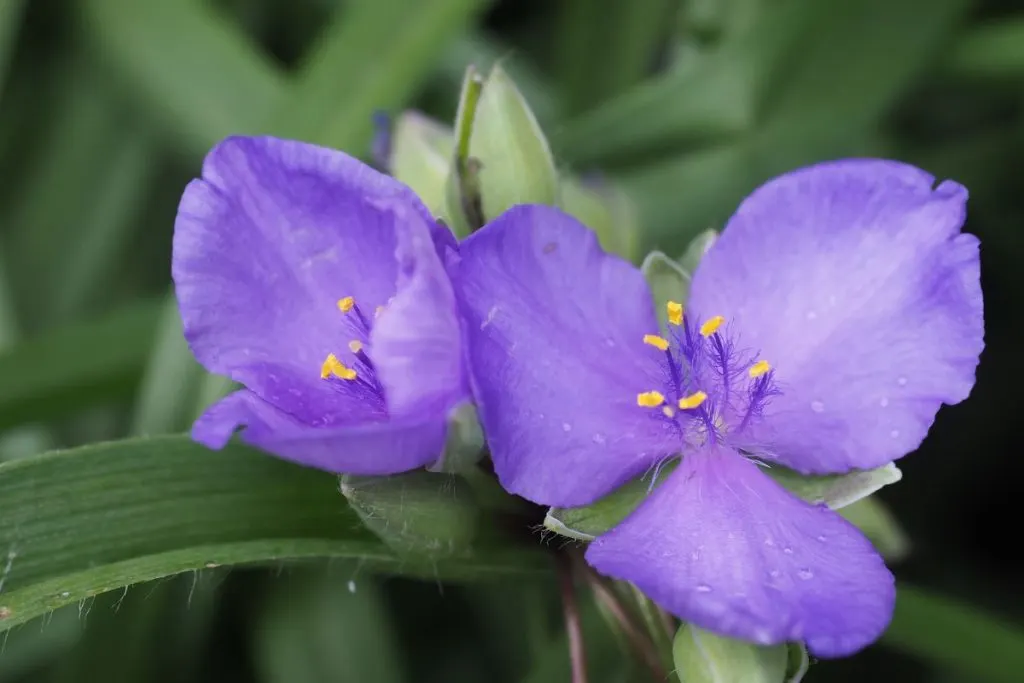
Tradescantia Virginiana is a herbaceous flowering plant, 12 to 30 inches tall. The length of the stems on dense or loose bushes does not reach more than 1.5 inches. The color of the flowers is pink or blue, sometimes there are white flowers.
– Perennial prefers fertile loose and moist soil. The culture tolerates drought well, is resistant to frost, and is not demanding of light. This species of tradescantia is widespread in Russia.
– The following varieties of Tradescantia virginiana are most commonly grown: var. Coerulea (pale blue flowers), var. Rubra, var. Atrorubra (ruby red flowers), var. Rosea (pink flowers).
Too sunny an area will negatively affect the development of a culture that loves moisture: the plant will first stop flowering and then die completely.
– Excessive shade is also not desirable, because in such conditions flowering may not occur at all. In addition, tradescantia does not tolerate drafts and strong winds.
– Too much water is also not desirable. So, when planting tradescantia near the coastal belt of reservoirs, you should move away from the edge of the water and plant it a little further or in-home cultivation, do not overdo it with water.
– The soil should be light, nutritious, and loose, with a slightly acidic reaction of the medium. The best option – is hydrated fertile soil with a high content of organic matter. An airy soil mixture should include lawn and leaves, sand, and humus.
– You can plant perennials with seeds, cuttings, or rooted cuttings. It is better to do it in early spring or, in case of division, in autumn. The plant planted with seeds will bloom only in the 3rd year of life.
– Perennial Tradescantia needs regular care, which includes watering, loosening the site, fertilizing, and controlling disease or pest control measures.
9. Rhoeo Plant Care Guide
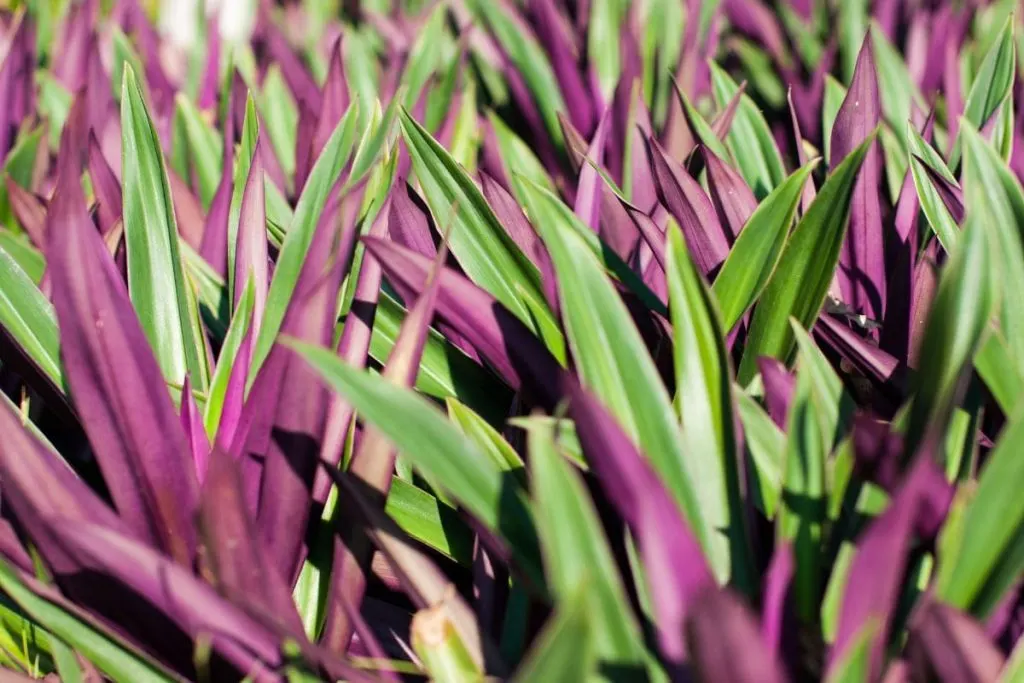
Tradescantia spathacea, is a perennial plant with perennial leaves of the Commelinaceae family. Rhoeo was previously called Rhoeo discolor and is sometimes encountered today.
– Rhoeo plant is native to the arid forest environments of America and warmer climates. This striking plant likes a humid environment due to its native habitat.
– The flowers are small, with three white petals. They appear in leaf axils on a very short tree and are surrounded by curious boat-shaped leaves. The plant rarely blooms indoors.
– This gorgeous plant produces a juice that can sometimes cause inflammation and skin irritation. It is better to place the pot away from passages and contact people, to avoid inconvenience. However, this plant is sometimes used as a medicine to treat, for example, respiratory infections.
– Tradescantia spathacea loves any type of soil with good humus. When grown as an indoor plant, Rheéo greatly appreciates strong light, without direct sunlight. Too much sun can kill this variety. However, it can tolerate direct sunlight in the morning or evening, which is why it has very pronounced colors.
– This pretty plant sometimes increases the size of its nodes: it becomes disheveled and lengthens with the loss of a compact and aesthetic appearance.
– Rhoéo has thick, almost juicy leaves, which makes it resistant to drought and forgetting watering. Water Tradescantia spathacea as soon as signs of drought are visible at the top of the pot.
– She also supports excess watering and likes to keep her feet in the water for a few days. Therefore, it is an ideal plant for stunned people, very easy to grow. The plant spreads by producing rhizome-derived rejectors.
Is Indirect Light Good For All Tradescantia Types?
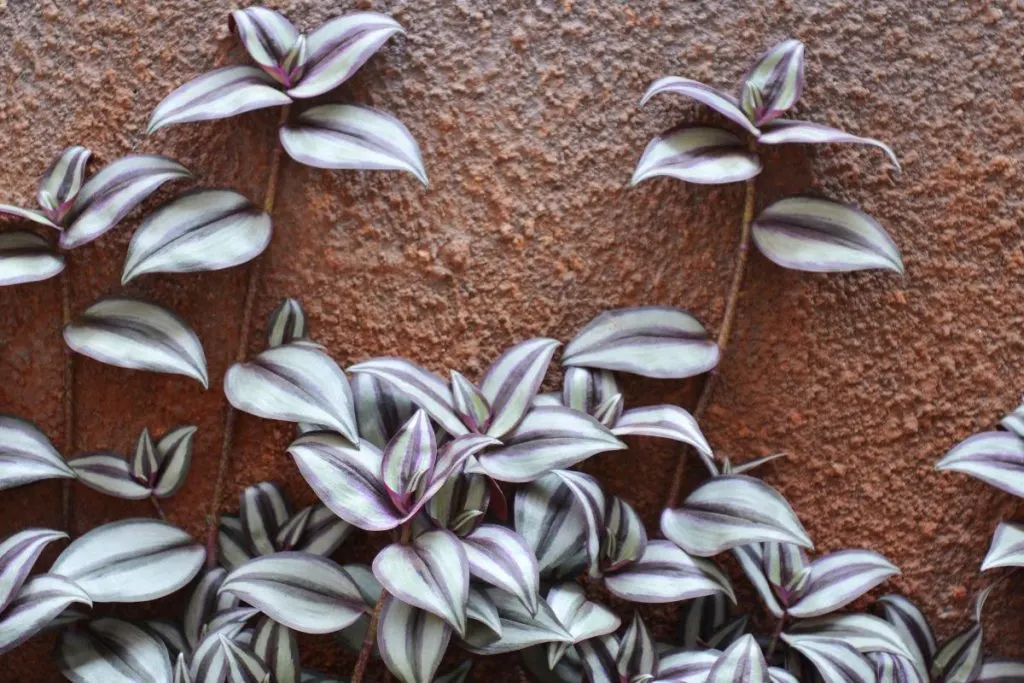
What is indirect light for plants? Is it good for Tradescantia? This type of light is the best for your tradescantia plant.
Bright indirect light – is when the sun’s rays do not travel directly from the sun to your plant, but instead bounce off something first.
Plants in bright, indirect light will cast blurry, obscure shadows. One of the confusing things about proper plant lighting is the difference between direct and indirect light. So let’s take a closer look at what each of these terms means.
Direct light – Direct sunlight is a fairly simple concept. This is when the plant receives direct, undisturbed sunlight. The key part here is barrier-free.
You may not realize how many objects stand in the way of direct sunlight during the day – think of tree branches, houses, or anything that stands high above plants.
Shadow technique – A convenient way to determine if your plant is sitting in direct or indirect sunlight is the shadow technique, which allows you to estimate the type of sunlight based on the appearance of the shade the plant casts.
A sharply defined shadow without blurred edges indicates direct light. The sun strikes the plant directly and casts a perfect shade.
A faint shade with fuzzy or blurred edges indicates indirect light because the sun does not hit the plant directly and thus does not create a perfectly defined shade.
The barely visible shadow indicates low light. There is still enough light for some degree of shadow, but it is very dim.
FAQ On Tradescantia Plants
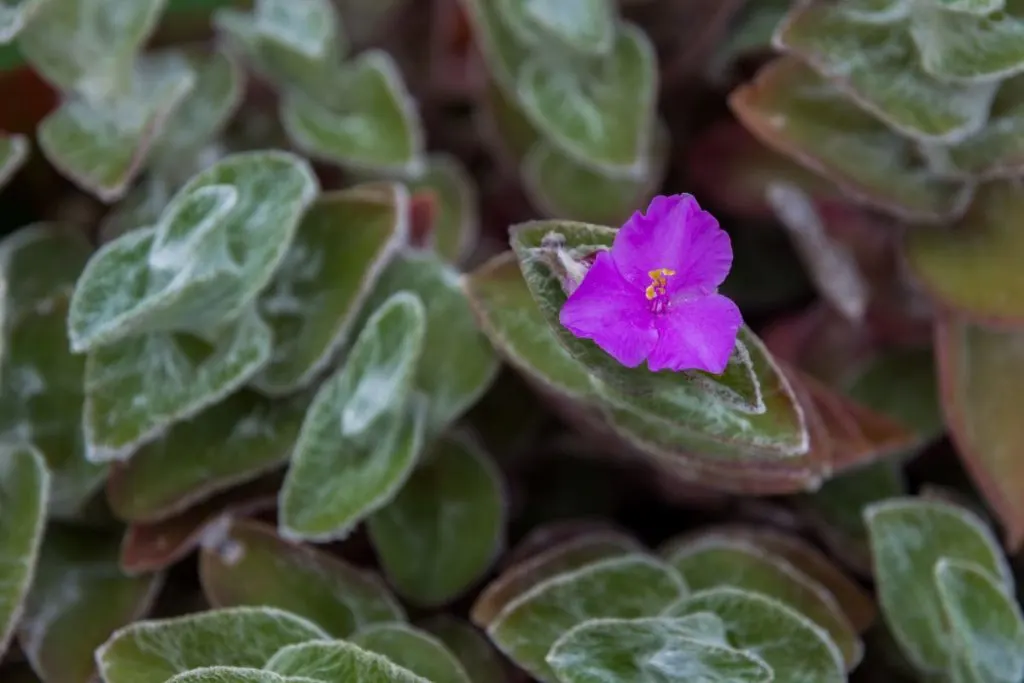
Q. I try to take the cuttings of a wandering Jew, but they still rot. How can I prevent this?
A. Your cuttings are probably suffering from a fungal infection. To prevent this, use a sterilized cutting instrument and dip it in Clorox, and then root hormone before placing the cuttings in the ground.
Q. How many Tradescantia types are there?
A. There are over 80 species of tradescantia plants.
Q. How do I know how far to place a wandering Jew from a window or light source?
A. Leave the plant where it is and follow the color of the leaves. If they start to lose bright colors, it is a clear sign that the plant needs more light. Bring it closer to the window and continue to observe the leaves until the color begins to return to new growth.
Q. I have problems with rooting cuttings in the soil. Can I do anything else?
A. Many gardeners have success by rooting their wandering cuttings of Jews directly into the water. Be sure to sterilize and change the water every so often to keep it fresh and pathogen-free. When you see the roots, plant them in a potting mixture.
Q. Is the wandering Jewish plant poisonous to cats?
In short, no, but it’s also not deadly. It irritates the digestive tract of pets if consumed and also produces a dermatitis-like effect on their skin.
Q. Can I grow a wandering Jewish plant outdoors?
A: Absolutely! It may be a little inconvenient if you are outside the USDA breeding zone 9-11, but if you are in that range, it is easy to breed outside!
In Conclusion About Tradescantia Types
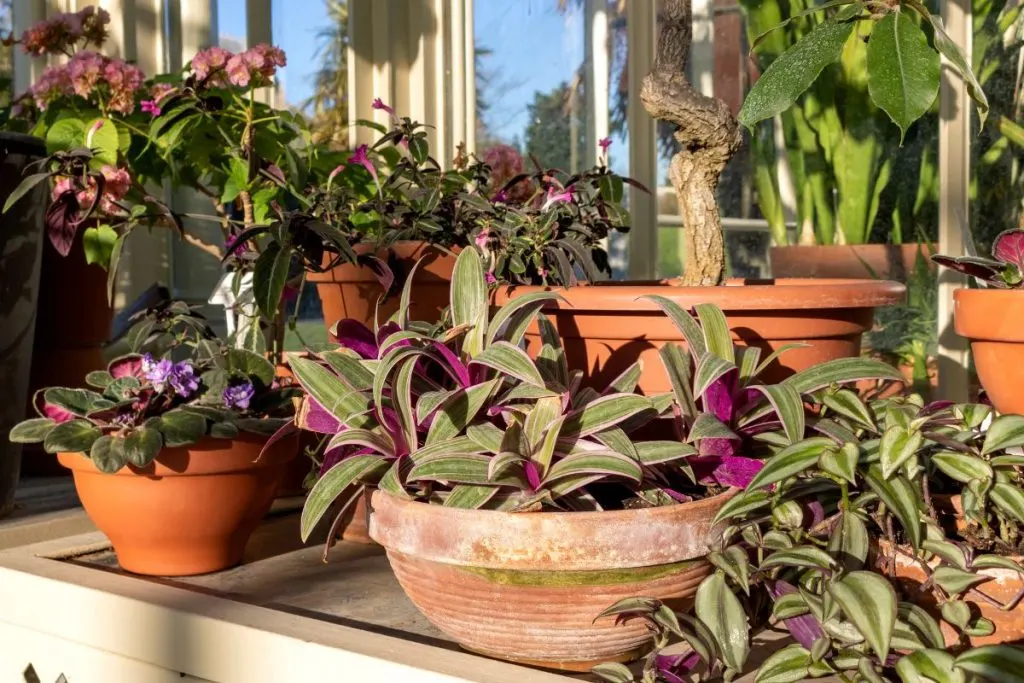
We’ve come to an end of this story about lovely perennial plants. We hope that you have some new ideas now for your new indoor plants.
If I was you, I would buy some hanging baskets today and with that first official step, you’re more than ready to get a tradescantia.
These lovely inch plants won’t take much space but they will leave that “wow” effect wherever you put them. Now that you know everything about tradescantia species, you’re more than ready to get this popular house plant. It’s their flowering season soon, hurry up!

